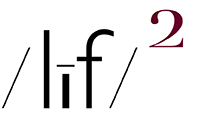iPhone 7 Plus camera module picture
watering pail ~ Au Sable Forks, NY (embiggenable)
coffee cans ~ Au Sable Forks, NY (embiggenable)
Atlantic Ave. ~ Brooklyn, NY (embiggenable)
In fact, some of my the new snapshot pictures have started out as picture files from one of my "real" cameras before undergoing a the new snapshot transmutation via my the new snapshot simulation picture processing workflow. However, as atested to by the 3 civilized ku pictures in this entry, I still continue to make civilized ku / ku pictures with my "real" cameras
All of that written, I would be fooling myself (and you) if I did not admit to being totally smitten by the fact that, as on Saturday last when I gave my iPhone to a friend who made a picture of me and my good friend at his retirement / 70th birthday party - my 70th birthday party is this Saturday - immediately after which I processed it on the iPhone and uploaded it to Instagram. Within 5 minutes of the upload, the picture was "liked" by our mutual friend, Guiliano, who lives in Italy.
The total time from the making of the picture to its first "like" on Instagram (from across the Atlantic Ocean) was approximately 10 minutes, 15 minutes at the most. That, my dear friends, is quite simply amazing.
What's not to be smitten about?


